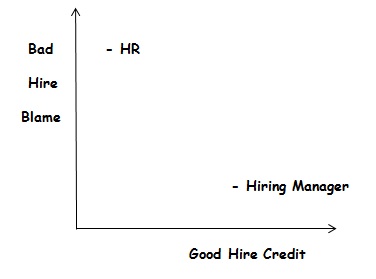For any HR/Talent Pro who lives with the concept of staffing levels – becoming ‘fully staffed’ is the nebulous goal that always seems to be just out of arms reach. I’ve lived staffing levels in retail, restaurants, hospitals, etc. I know your pain – to be chasing that magic number of ’37 Nurses’ and almost always seeming like you’re at 35 or 36, the day that #37 starts, one more drops off…
There are 3 main reasons you can’t get fully staffed:
1. Your numbers are built on a perfect world, which you don’t live in.
2. Your hiring managers refuse to over-hire.
3. Your organization actually likes to be under staffed.
Ok, let me explain.
The concept of being fully staffed is this perfect-case scenario – a theory really – in business that there is a ‘perfect’ amount of manpower you should have for the perfect amount of business that you have at any given moment. That’s a lot of perfects to happen all at once! Usually your finance team comes up with the numbers based on budgeting metrics. These numbers are drawn down to monthly, weekly, daily and hourly measures to try and give you precise number of ‘bodies’ needed at any given time. You already know all of this. What you don’t know is why this type of forecasting is so broken when it comes to staffing.
These models are predictive of having a fully functioning staff to meet the perfect number needed. Fully trained, fully productive, etc. If the model says you need 25 Nurses to run a floor, in reality you probably need many more than that. Finance doesn’t like to hear this because they don’t want to pay 28 Nurses when the budget is for 25 Nurses. You’re in HR, you know the reality – staffing 25 Nursing openings (or servers, or assembly workers, or software developers, etc.) takes more than 25 Nurses. You have Nurses who are great and experienced and you have ones who are as green as grass -you have ones retiring in a few months, some taking leave, some leaving for other jobs, etc. Because of this you have a budget for overtime – why? – because you need coverage. This why you need more than 25. And the staffing levels argument goes around in circles with finance.
I’ve worked with some great finance partners that get the entire scenario above – and would let me hire as many people as I felt I needed – and it still didn’t work!? Hiring managers struggle with one very real issue – what if. What if, Tim, we do get all 28 hired and now I only have needs for 25? What will we do?! Even when you explain the reality, they will subconsciously drag their feet not to hire just in case this might actually come true. I’ve met with HR/Talent Pros from every industry and all of them share very similar stories. They can’t get fully staffed because of what little stupid ‘perfect’ concept – “what if we actually get staffed!” That’s it.
You can’t get staffed because you actually might get staffed! If you’re fully staffed hiring managers are now held accountable to being leaders. If you’re fully staffed, plus some extra, hiring managers have to manage performance and let weak performers go. If you’re fully staffed – being a hiring manager actually becomes harder. When you’re under staffed everyone realizes why you keep a low performer, why you allow your people to work overtime they now count on as part of their compensation and can’t live without. When you’re under staffed everyone has an excuse.
You’ll never become fully staffed because deep down in places you don’t talk about at staffing meetings you like to be under staffed, you need to be under staffed.


